Introduction
💡 What's Valeiot?
Valeiot is a Cloud IoT (Internet of Things) Platform that provides a set of tools for building customized dashboards connected to devices. It offers a variety of features to simplify development and accelerate the deployment of IoT solutions.
The name "Valeiot" originates from the place where it was envisioned and designed - the "Vale da Eletrônica" (Electronics Valley), region internationally recognized as a technology hub.
The platform has two distinct access areas: the creation/development space (Console) and the product or white-label space (Portal), which is where your end-users will access the solution. You should start with the Console to understand and operate its resources, including the Portal. You can access it here: https://console.valeiot.com/.
console.valeiot.com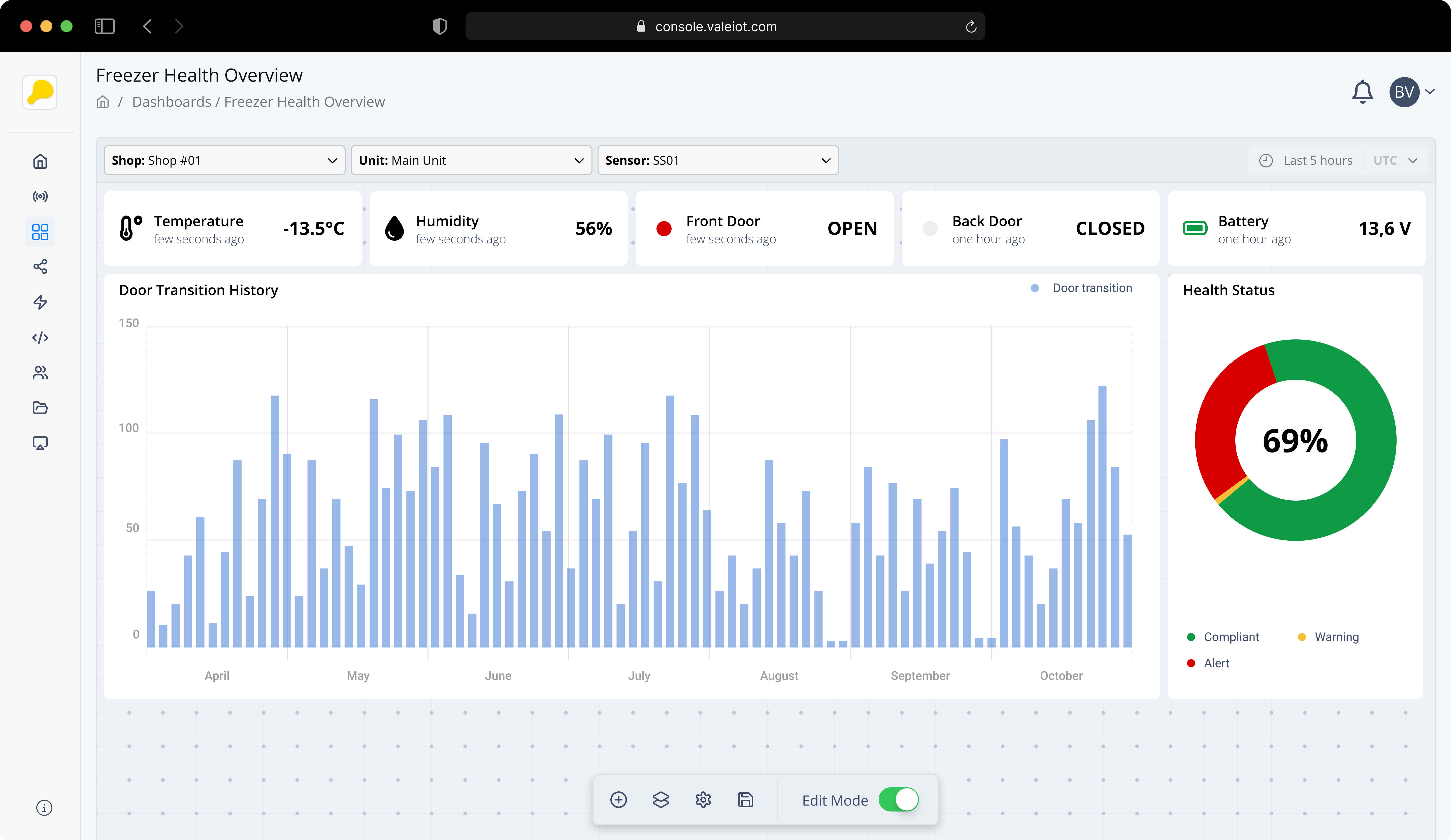
my-company-url.com
🧶 Data Flow (from device to dashboard)
Before jumping into the main features of Valeiot, it's important to understand how data flows through the platform. The diagram below illustrates the typical data flow from IoT devices to the dashboards within Valeiot.
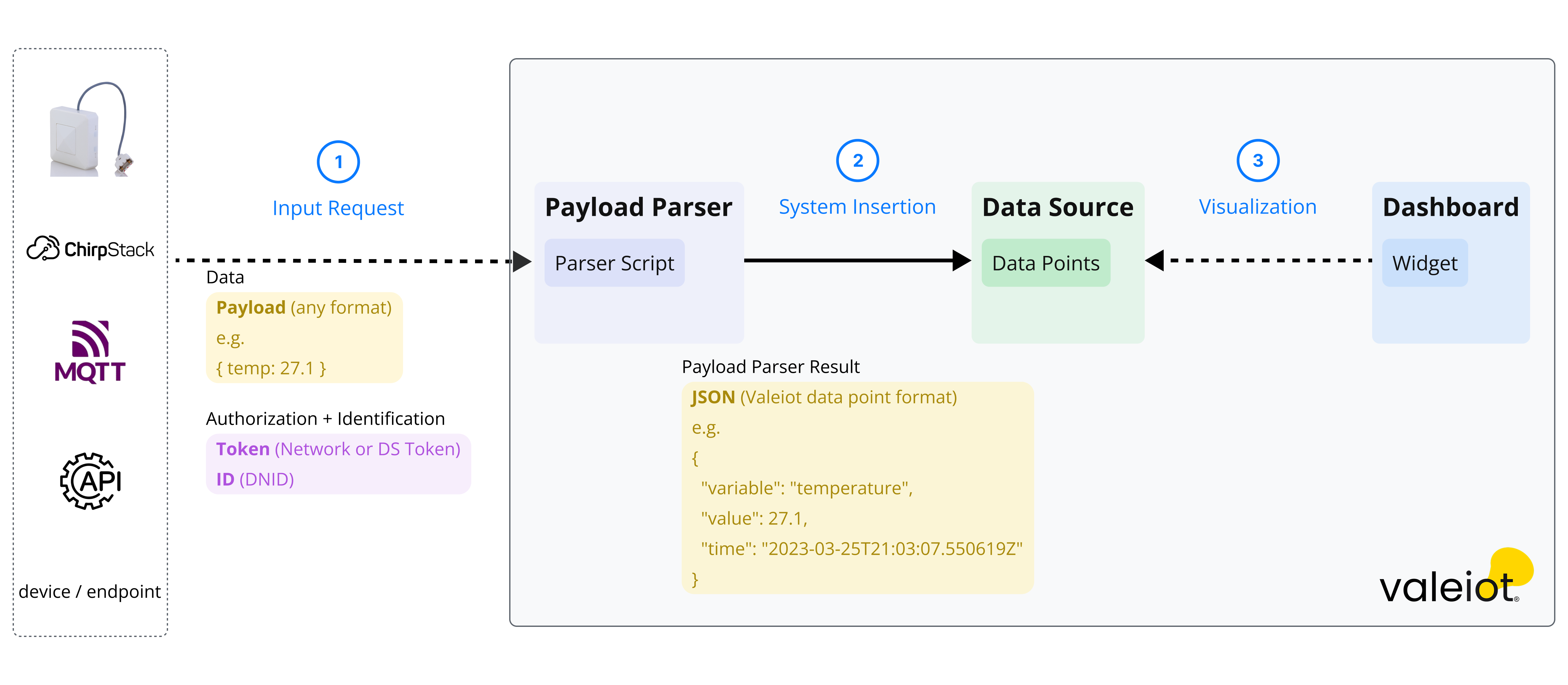
Main Features
🕹️ Devices

Connect your workspace with any IoT device. Key features include monitoring, long-term storage, visualization, provisioning, data inspection, tag-based management, data retention and scalable management for thousands of devices. Examples of supported devices include trackers, temperature sensors, security cameras, energy meters, gas detectors, motion detectors and more.
🏬 Entities

Refer to higher-level components or structures used to organize and manage an IoT solution. They represent components that help categorize, group and store data from various devices. Examples include: Organizations, groups, regions, states, cities, locals and more.
🎨 Dashboards and Widgets
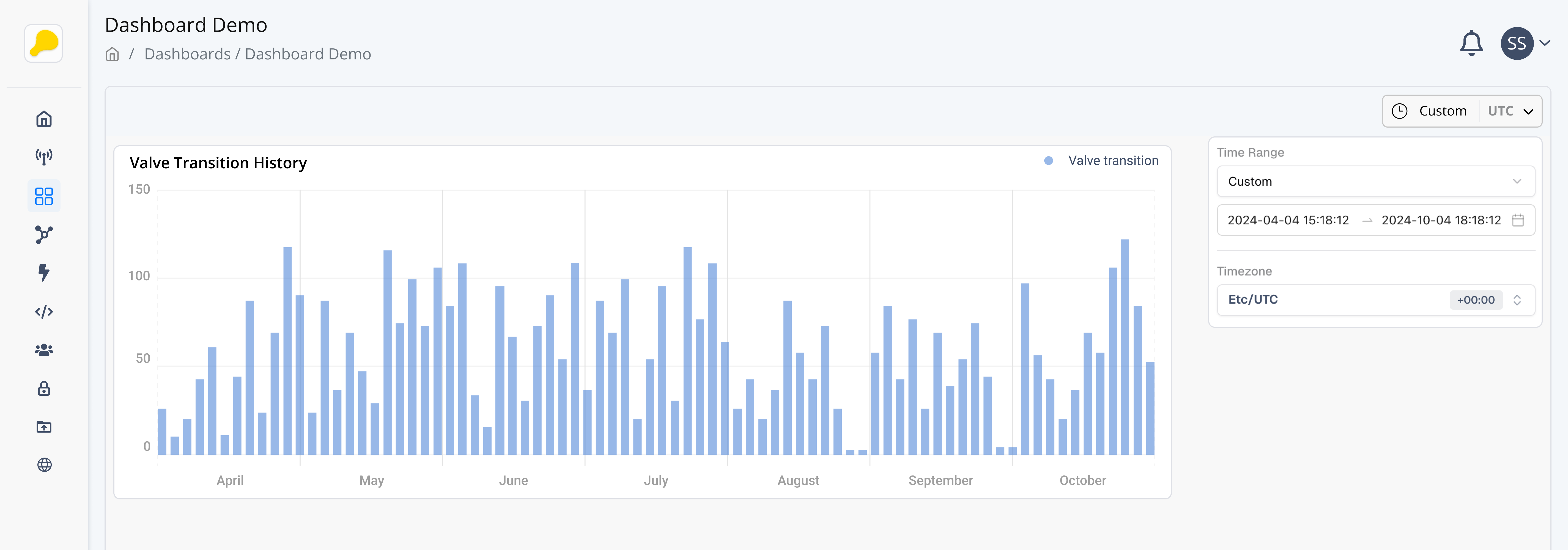
Real-time data visualization from devices or entities with "no code" customization. Add widgets (as blocks) to customize accordingly to the solution. Select a widget from the library (display, chart, dial, table, map and more), customize the appearence picking colors and defining content and drag and drop inside the dashboard.
🧩 Integrations
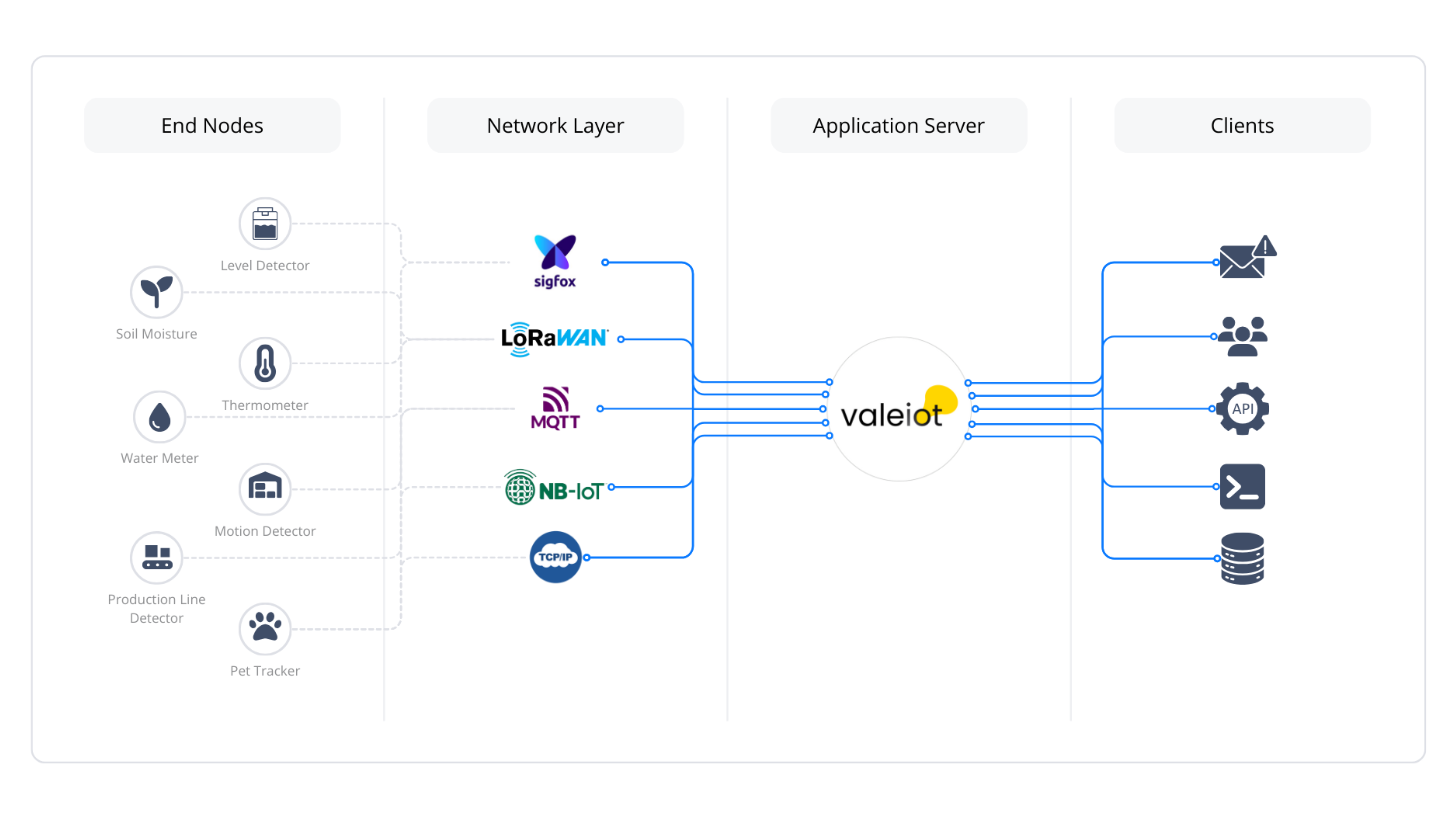
Valeiot offers support for different integration options, such as MQTT, HTTPs, TCP/IP, LoRaWAN and more. Connect any device with those communication protocol and decode their message with the payload parser.
⚡ Actions
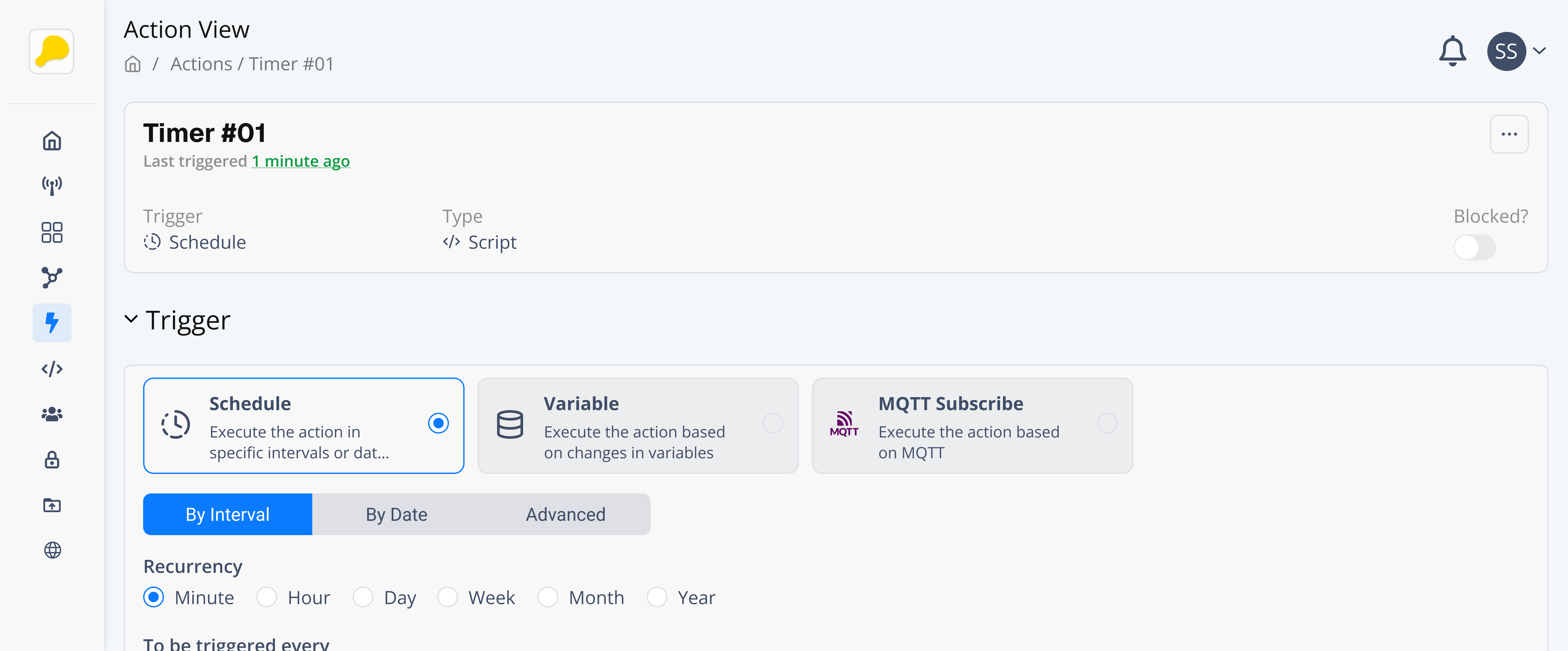
Actions or schedulers are used to trigger events automatically based on predefined conditions or specific scenarios.
📝 Scripts

Deploy cloud-based scripts (Node.js is currently available and Python is comming soon) to execute custom logic in response to specific events or conditions.
👥 Users & Access

Use the Users feature to create and manage customer access. Define policies to control or restrict user permissions.
✨ Portals

Portal is where your customers will access your Solution. Customize a white-label system with your company's colors, logo and your domain.
We Invite You to Explore!
Valeiot is a continuously evolving platform with much more to offer. Start exploring today by accessing the console at https://consolevaleiot.com.
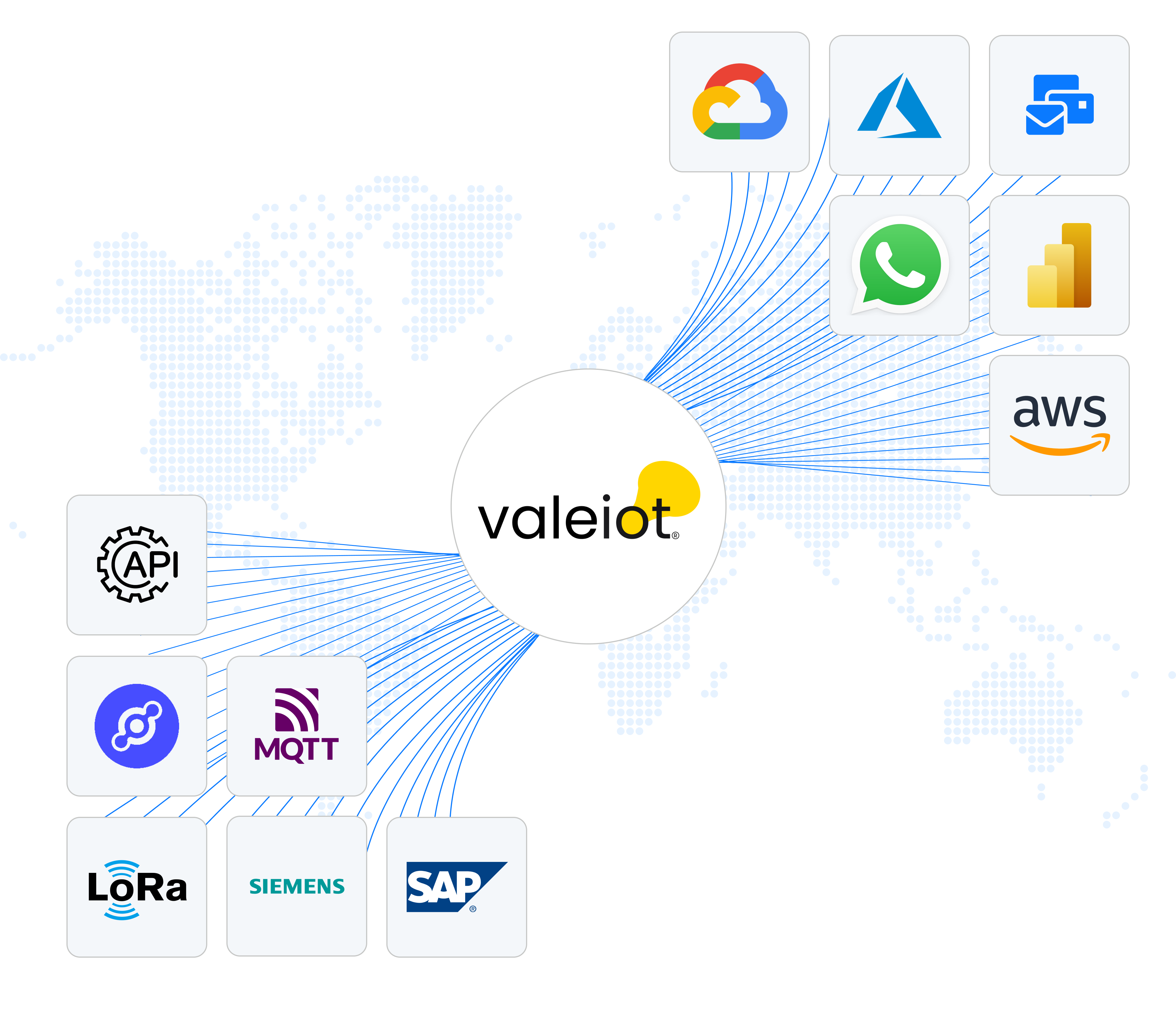
Best Practices for Learning Valeiot
We recommend a full review of the introductory sections from the documentation to gain a complete understanding of the system.
This will ensure you’re equipped with the necessary knowledge to make the most out of the tools and features provided.
Other helpful resources include:
- SDK Docs (Available soon)
- API Docs (Available soon)
- Valeiot Community (Available soon)
- Status page (Available soon)
- Support Contact
Console Access
To access Valeiot Console, you need to create a free account.
- Go to console.valeiot.com.
- Click on the Sign Up button.
- Follow the instructions displayed on the screen.
- Verify your email and login.
Now, you can access the Valeiot Console.